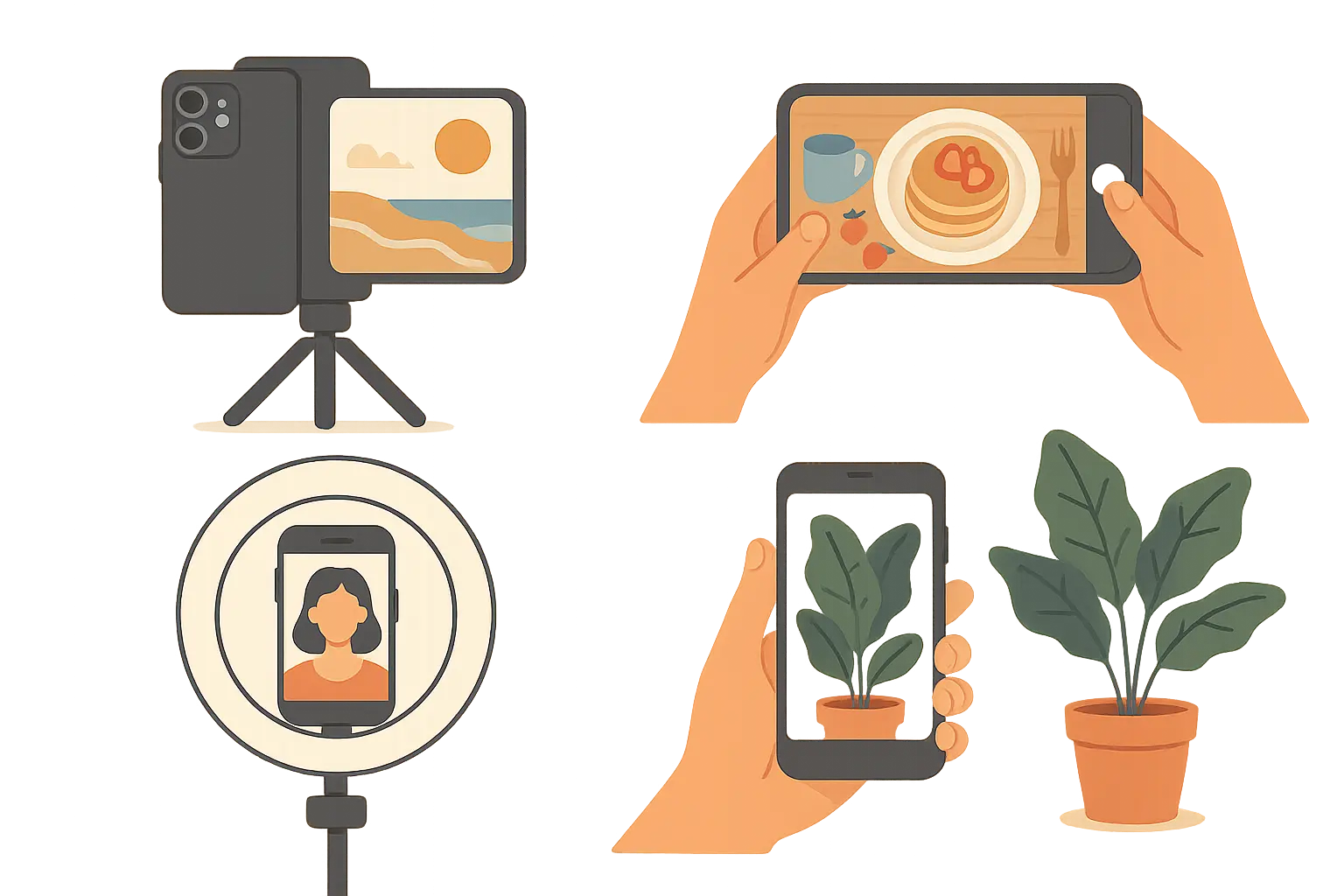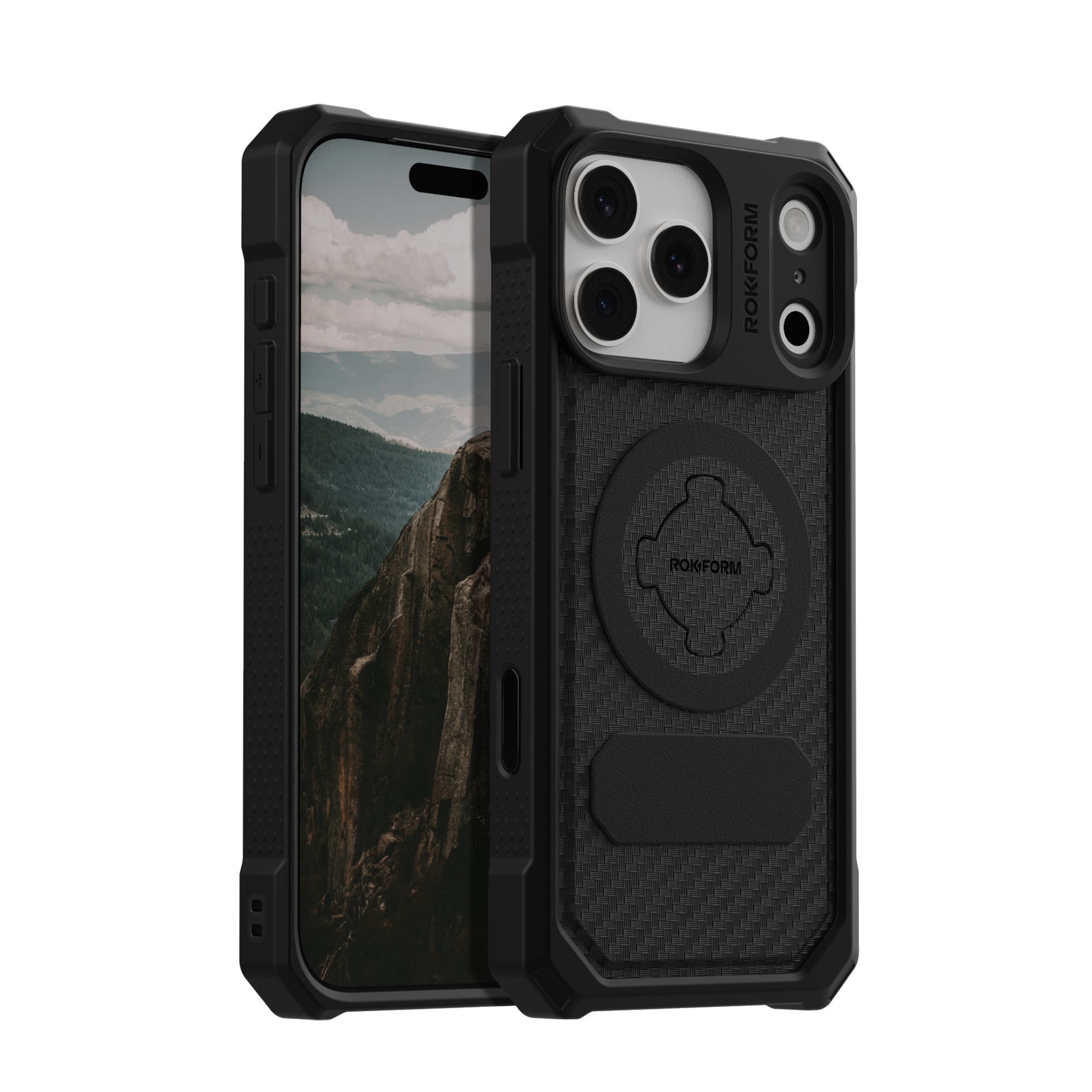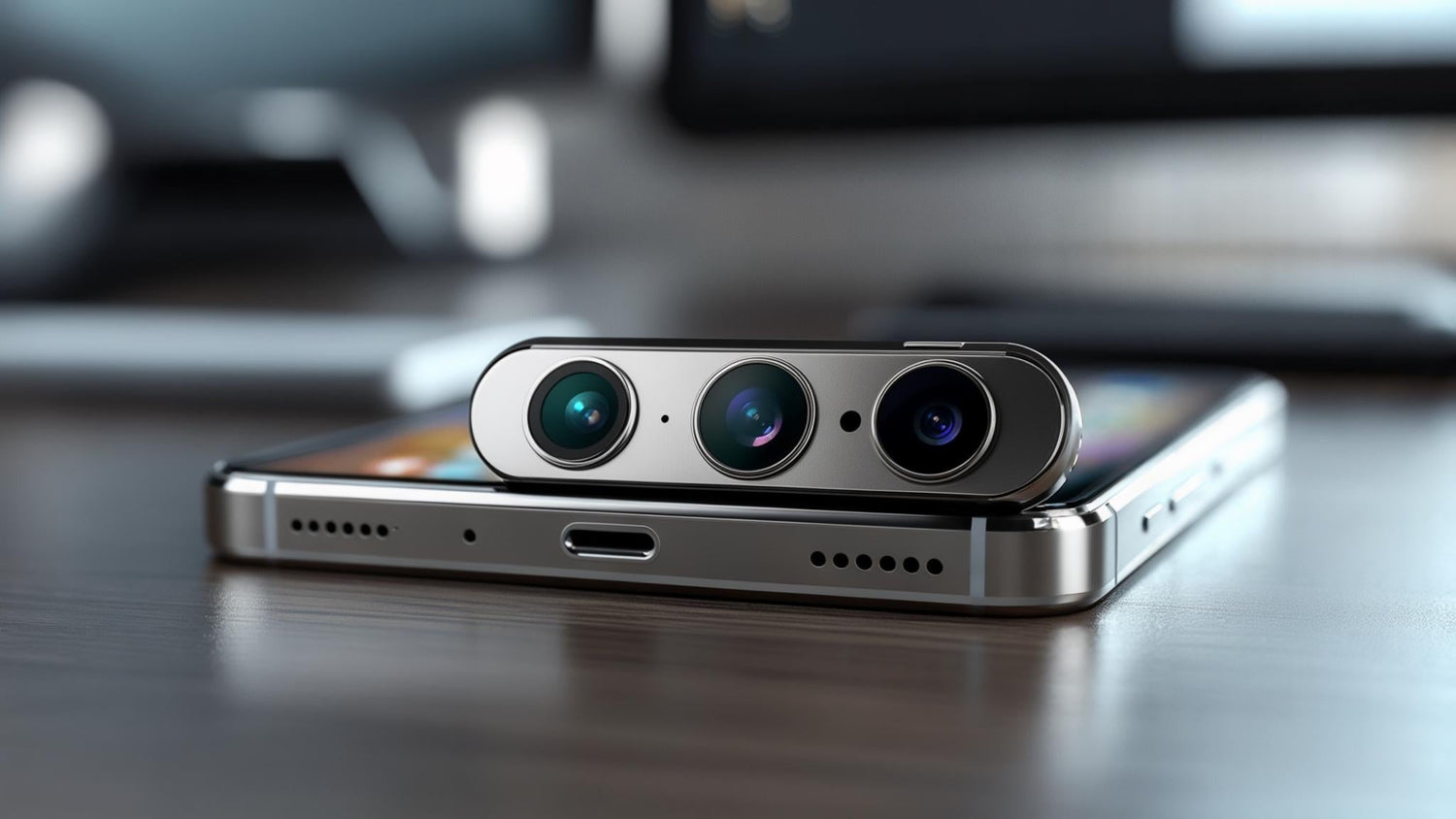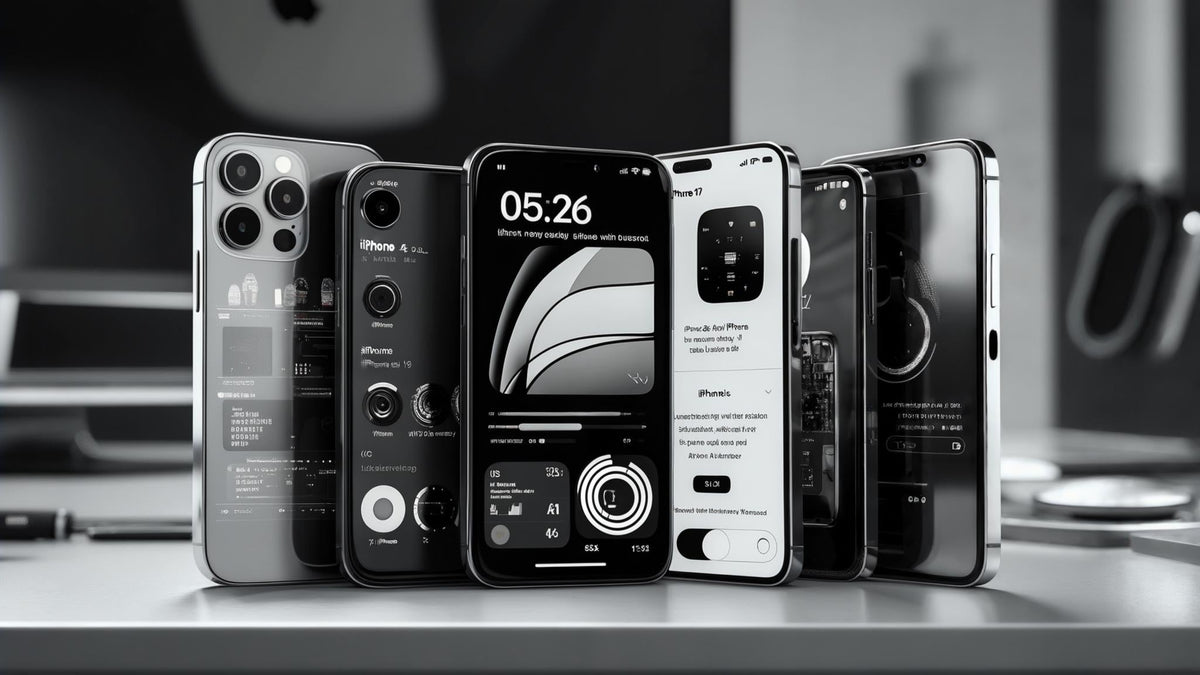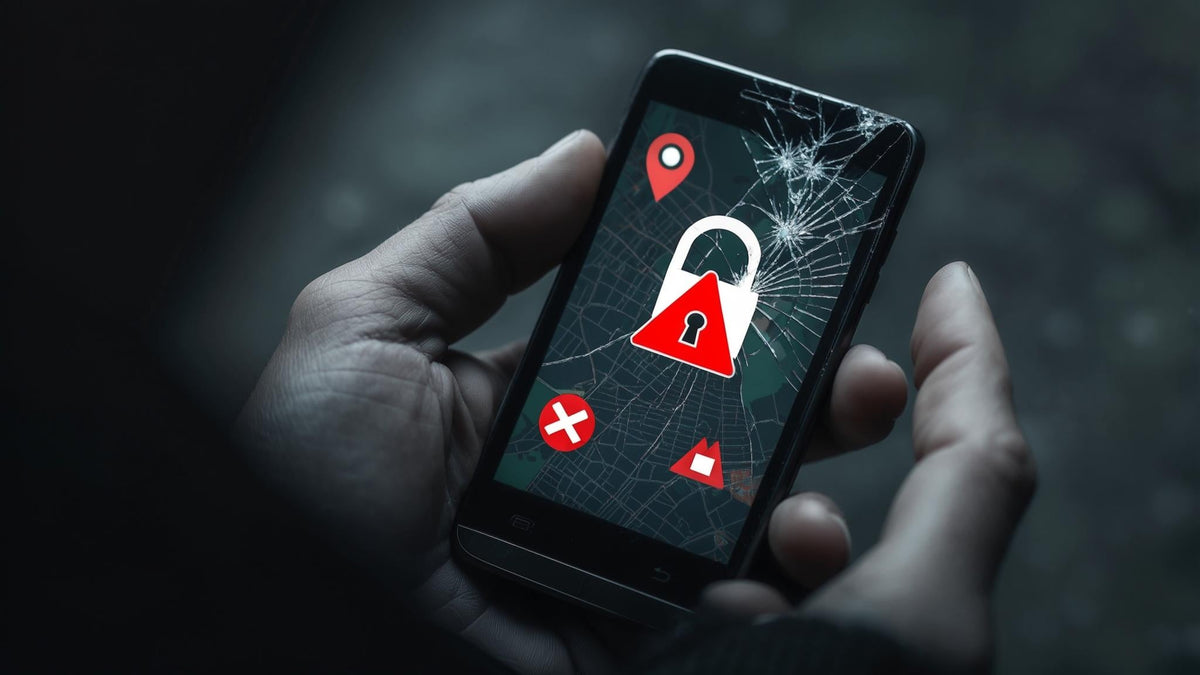I'll never forget the first time I switched from my old single-camera phone to one with three lenses. I was hiking in Colorado, and suddenly I could capture the entire mountain range with the ultra-wide, zoom in on a hawk circling overhead, and snap a portrait of my friend with that creamy background blur I'd only seen in professional photos. That's when it hit me – smartphone photography had completely changed the game.
The global market for triple camera smartphones reached $48.7 billion in 2024, with projections showing a 14.2% growth rate through 2028 according to industry analysis from Accio. If you're tired of choosing between getting the whole scene or zooming in close, phones with triple camera setups solve that problem beautifully.
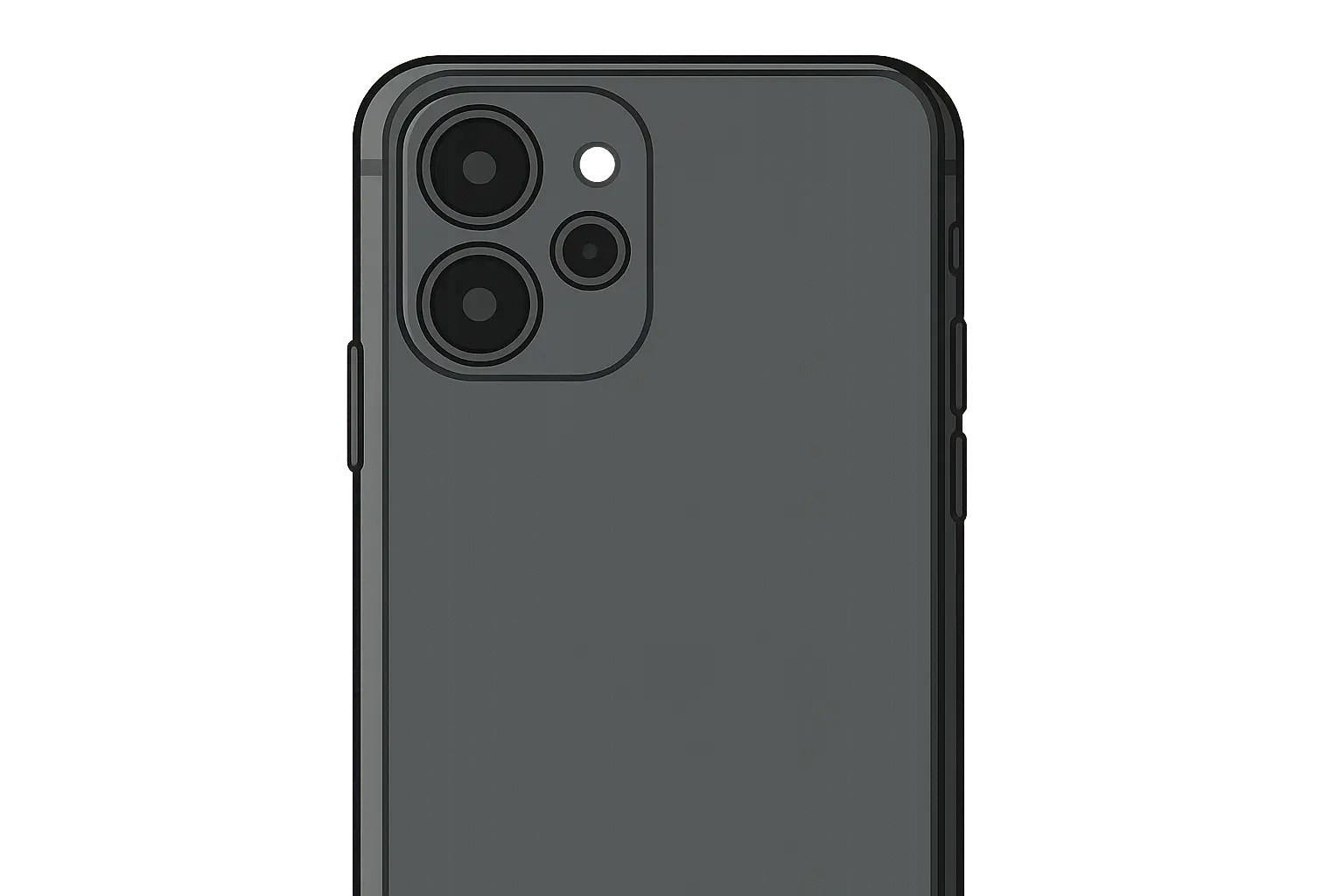
Whether you're documenting family moments, building your social media presence, or pursuing photography as a serious hobby, having three distinct lenses at your fingertips opens up creative possibilities you never knew existed. Here's everything you need to know about finding the right one.
Table of Contents
What Actually Matters When Choosing a Triple Camera Phone
The Best Triple Camera Phones by Category
More Great Options Across Every Budget
Real-World Performance: What to Actually Expect
Smart Shopping: Matching Phone to Real Needs
Protecting Your Triple Camera Investment
Making Your Final Decision
TL;DR
Premium flagships like iPhone 15 Pro Max and Galaxy S24 Ultra offer the best overall camera performance but cost more
Mid-range options such as iPhone 13 and Pixel 8 provide excellent value without sacrificing core photography features
Budget phones with 3 cameras like Galaxy A54 5G bring triple camera systems to affordable price points with some compromises
Camera quality depends more on sensor size, software processing, and lens quality than just megapixel count
Consider your actual photography habits – professional work, social media, or casual shooting – when choosing
Proper protection becomes crucial when investing in advanced camera technology
Software support and update longevity vary significantly between manufacturers and price tiers
What Actually Matters When Choosing a Triple Camera Phone
Forget the marketing hype – here's what really makes a difference when you're shopping for phones with triple camera systems:
The Cameras Need to Work Well Together
Most triple setups include a main lens, ultra-wide, and either zoom or macro. But here's the thing: three mediocre cameras don't beat one great one. Look for phones where all three lenses produce similar quality and colors.
Consider the difference between the iPhone 15 Pro Max's coordinated system versus a budget phone where the main camera is decent but the ultra-wide looks washed out and the macro is basically useless. The best triple camera phones maintain consistency across all lenses.
Software Is Everything
A 48MP camera with terrible processing will give you worse photos than a 12MP camera with smart AI. Night mode, portrait processing, and how smoothly you can switch between lenses – that's where the magic happens.
Modern smartphone photography relies heavily on computational photography. The phone's AI handles scene detection, automatically adjusting settings for optimal results. This is why Google Pixel phones often outperform phones with superior hardware specs.
Know Your Photography Style
Are you posting to Instagram, printing family photos, or trying to build a photography business? A $400 phone might nail your needs, or you might need that $1,200 flagship. Be honest about what you actually do with your photos.
Travel photographers benefit from versatile zoom ranges and excellent low-light performance, while family photographers might prioritize ease of use and consistent results across different scenarios.
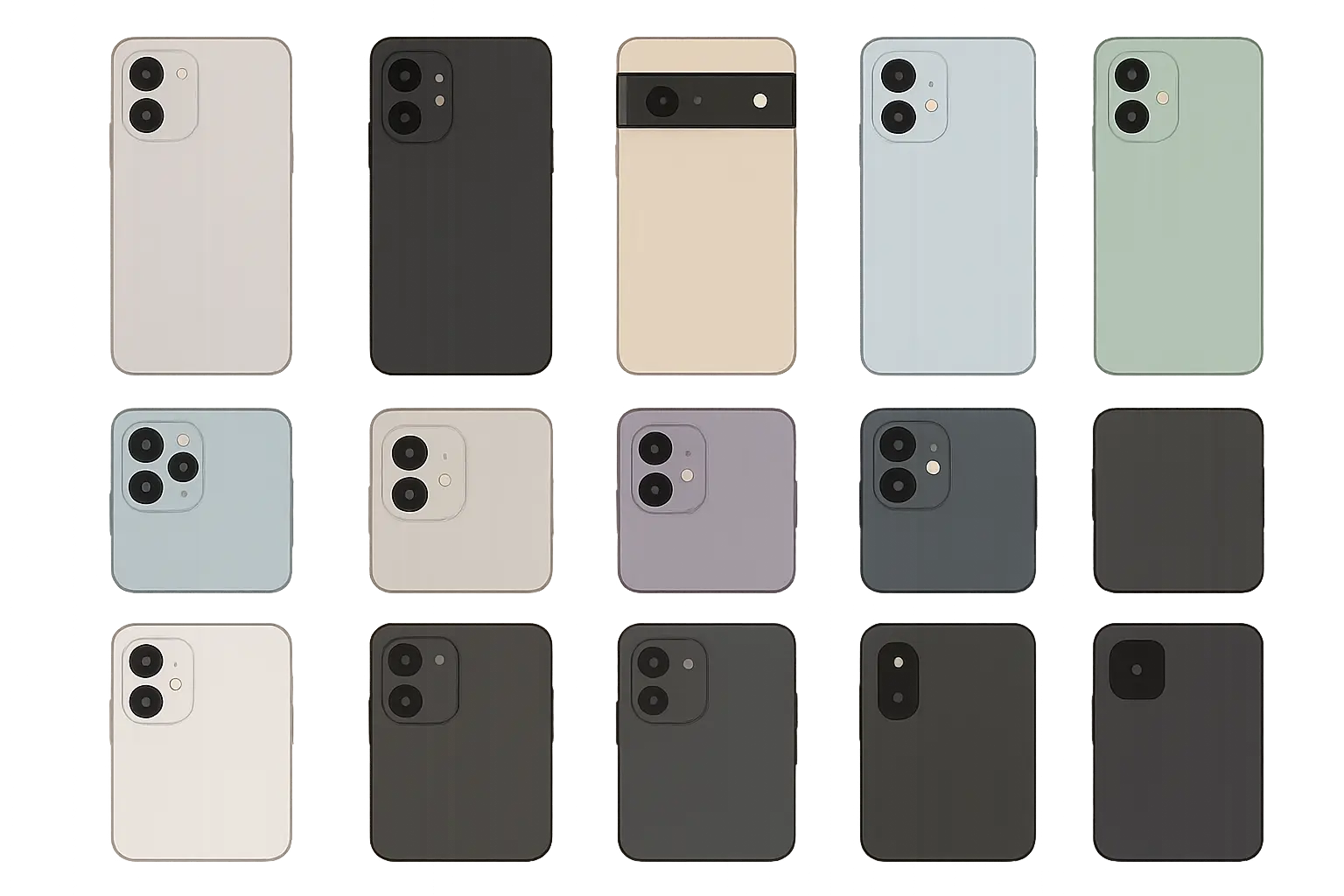
The Best Triple Camera Phones by Category
If Money's No Object: Premium Flagships
iPhone 15 Pro Max
This is the phone that makes other phones jealous. The 48MP main camera (f/1.78) captures incredible detail, while the 12MP ultra-wide handles expansive landscapes beautifully. The standout feature is the 12MP telephoto with 5x optical zoom, using innovative tetraprism technology.
The 5x zoom is incredible for concerts and sports, and the video quality is so good it's almost unfair. Advanced ProRAW capabilities give you professional-level control, while Action mode delivers incredibly smooth video even during high-movement activities.
Yes, it's expensive, but if you're serious about mobile photography, this represents the current pinnacle of what's possible in a smartphone.
iPhone 15 Pro
All the camera power of the Pro Max in a size that won't give you hand cramps. You get the same 48MP main sensor, 12MP ultra-wide, and 12MP 5x telephoto configuration without any performance compromises.
The smaller size makes it easier to handle during extended photography sessions, and it fits more comfortably in pockets and smaller bags.
Samsung Galaxy S24 Ultra
Samsung went all-out with a 200MP main camera and zoom that goes up to 100x (though anything past 30x gets pretty rough). The 12MP ultra-wide captures expansive scenes, while the 50MP telephoto with 5x optical zoom excels at distant subjects.
It's like having a Swiss Army knife for photography. The additional 10MP 3x telephoto provides more zoom flexibility than any competitor, making this one of the most versatile camera phones available.
iPhone 14 Pro Max
Still highly competitive despite being the previous generation. The 48MP main sensor delivers excellent results, and the 12MP ultra-wide and 12MP 3x telephoto provide solid versatility.
The price reduction since the iPhone 15 series launch makes this an excellent value for flagship-level performance.
Samsung Galaxy S23 Ultra
The 200MP main sensor excels in light gathering, producing clean images even in challenging conditions. The dual telephoto setup provides zoom flexibility that most competitors can't match.
Build quality is excellent with premium materials and IP68 water resistance.
Great Cameras Without the Premium Price: Standard Flagships
iPhone 15
Gets you 90% of the Pro experience for significantly less money. The 48MP main camera delivers excellent detail, while the 12MP ultra-wide handles landscapes well. The 2x zoom is actually just a crop from the main camera, but it works surprisingly well.
USB-C adoption makes it more versatile for accessories and charging. The balance of features and price makes this appealing for users who want excellent cameras without paying premium prices.
iPhone 14
Features a proven 12MP triple camera system that delivers consistent, reliable results. While not as advanced as newer models, the camera performance remains excellent for most photography scenarios.
Strong long-term value due to Apple's extended iOS support, and price reductions make it increasingly attractive.
Samsung Galaxy S24
Compact flagship experience with 50MP main, 12MP ultra-wide, and 10MP 3x telephoto. AI-enhanced photography features help optimize settings automatically for better results.
The smaller size makes it more comfortable for extended use while still delivering flagship-level performance.
Google Pixel 8 Pro
Google's computational photography is borderline magic. The Magic Eraser alone has saved countless photos by removing random strangers from my vacation shots. The 50MP main, 48MP ultra-wide, and 48MP telephoto cameras leverage AI processing that often produces better results than phones with superior hardware.
Seven years of software updates provide excellent long-term value, and features like Best Take ensure everyone looks their best in group photos.
iPhone 13
Still holds its own against newer phones. If you can find one at a good price, it's hard to beat for reliability and image quality. The 12MP triple camera system handles most photography scenarios well, from family gatherings to travel photography.
Excellent long-term value due to Apple's extended support cycle, and decreasing prices make it increasingly attractive for budget-conscious buyers.
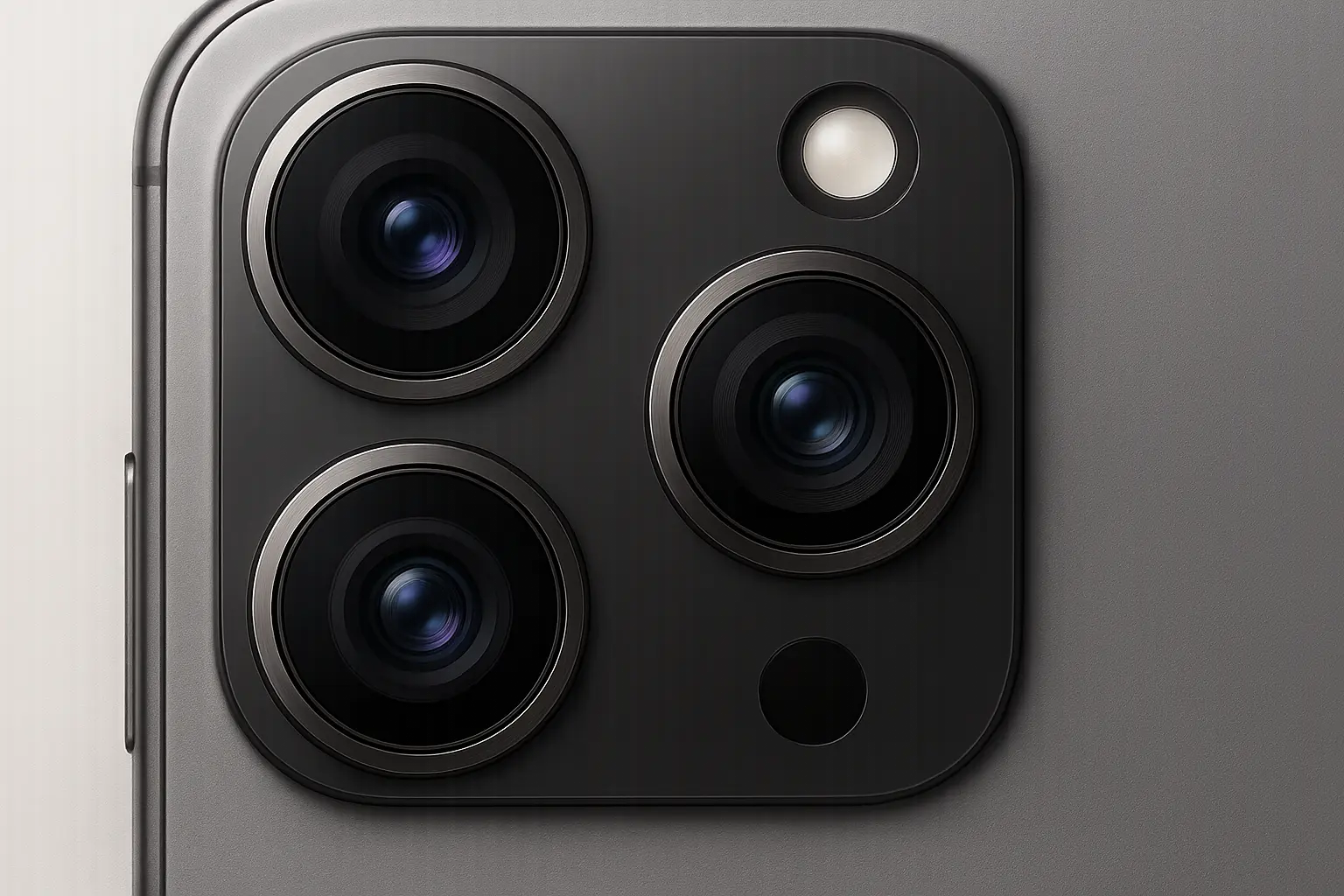
The Sweet Spot: Mid-Range Champions
Google Pixel 8
Brings Google's photo wizardry to a lower price point. The 50MP main camera and 12MP ultra-wide deliver excellent results. No telephoto lens, but the digital zoom is better than many phones with actual zoom cameras.
Seven years of software updates provide exceptional long-term value, making this a smart investment for users who keep phones for extended periods.
A travel photographer comparing the Pixel 8's digital zoom to dedicated telephoto lenses found that up to 4x magnification, the Pixel's computational zoom produced sharper, more detailed images than many budget phones with actual telephoto cameras.
OnePlus 11
The Hasselblad partnership really shows in the natural color reproduction. Photos look like what you actually saw, not oversaturated Instagram filters. The 50MP main, 48MP ultra-wide, and 32MP telephoto cameras benefit from excellent color tuning.
Fast charging capabilities mean you can quickly top up the battery during photography sessions.
Samsung Galaxy A54 5G
Brings flagship-style cameras to the mid-range. Great in good light, struggles a bit at night, but hard to complain at this price. The 50MP main camera performs well in daylight, while the 12MP ultra-wide and 5MP macro add versatility.
Samsung's software support for mid-range phones has improved, providing better long-term value than previous generations.
Xiaomi 13
Leica partnership brings professional color science to the 50MP main, 12MP ultra-wide, and 10MP telephoto setup. The collaboration results in more natural color reproduction and improved processing algorithms.
Excellent price-to-performance ratio makes it compelling for budget-conscious users who don't want to compromise on camera quality.
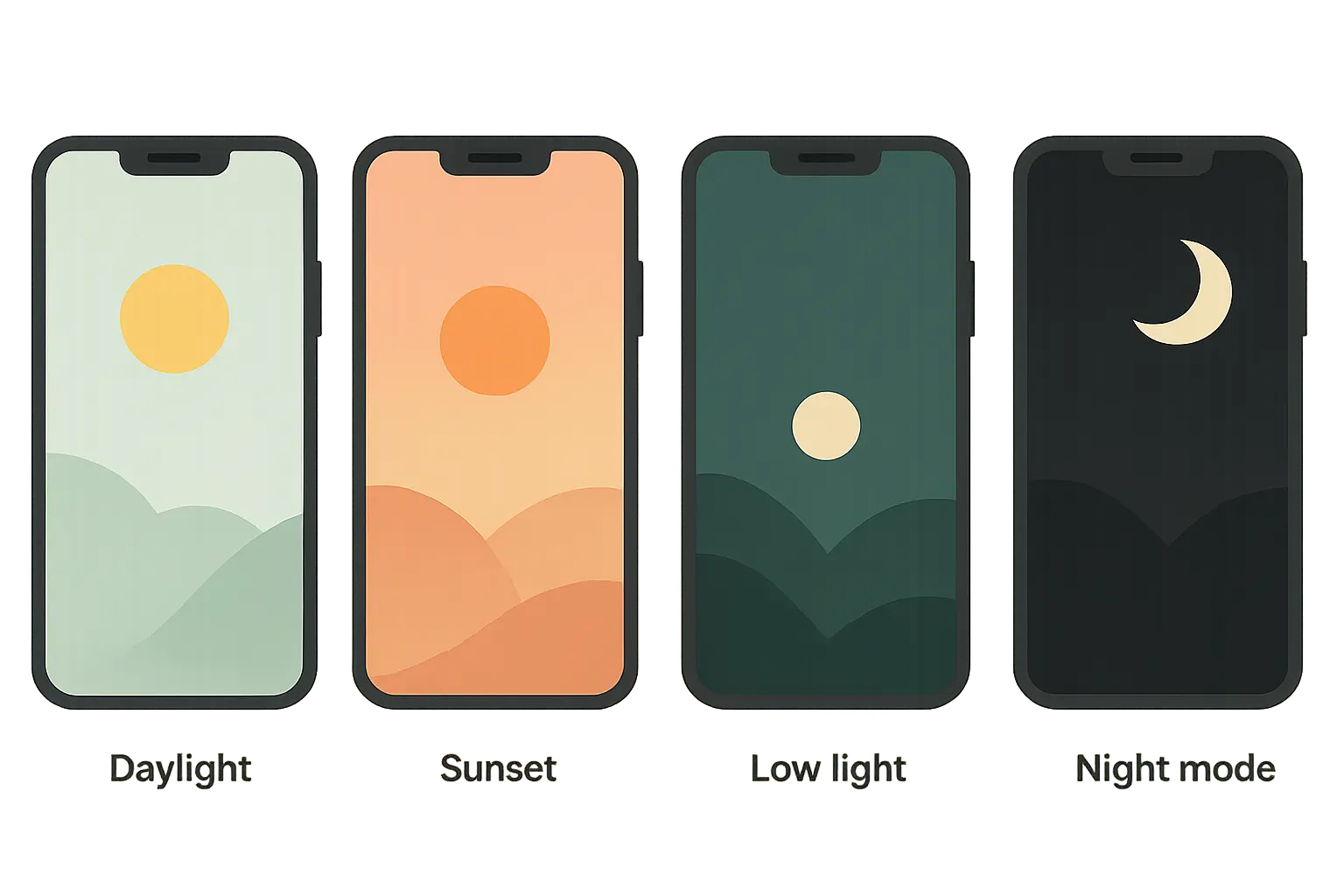
Budget-Friendly Options That Don't Suck
Google Pixel 7a
Proves you don't need to spend $800+ for great photos. Gets most of the Pixel magic at a fraction of the cost. The 64MP main and 13MP ultra-wide cameras deliver good results, while digital zoom performance is surprisingly strong thanks to Google's processing.
Clean Android experience with guaranteed updates provides excellent long-term value.
Samsung Galaxy A34 5G
Solid everyday photography without breaking the bank. Just don't expect miracles in low light. The 48MP main, 8MP ultra-wide, and 5MP macro cameras offer decent performance for the price.
Samsung's software support for budget phones has improved, providing better long-term value.
Realme 11 Pro+
The 100MP main sensor captures impressive detail in good lighting conditions, while the 8MP ultra-wide and 2MP macro add basic versatility. Fast charging capabilities are a standout feature.
Best suited for users who primarily shoot in good lighting and want high-resolution main camera performance.
Redmi Note 12 Pro
Strong value proposition with 50MP main, 8MP ultra-wide, and 2MP macro cameras. The main camera performs well in daylight, though the supporting cameras are more basic.
Good choice for users who want basic triple camera functionality without spending significantly more money.
Honor 90
That 200MP main sensor sounds impressive and actually delivers decent detail in good light. The 12MP ultra-wide and 2MP depth cameras provide basic additional functionality.
The attractive design and good display quality enhance the overall experience.
More Great Options Across Every Budget
Specialized Phones for Specific Needs
Sony Xperia 1 V
Built for photography nerds who want full manual control. If you miss your DSLR's settings wheel, this phone speaks your language. The 48MP main, 12MP ultra-wide, and 12MP telephoto cameras offer extensive manual controls similar to traditional cameras.
The 21:9 screen is weird for everything else, but amazing for photography. Professional camera app provides detailed control over exposure, focus, and other settings.
Asus ROG Phone 7
Gaming phone that doesn't phone in the cameras (see what I did there?). Surprisingly good photos for a device designed to run games at max settings for hours. The 50MP main, 13MP ultra-wide, and 5MP macro cameras deliver good results for a gaming-oriented device.
The large battery and fast charging support extended gaming and photography sessions.
Nothing Phone (2)
The transparent back is either cool or gimmicky depending on your taste, but the cameras are genuinely solid. Clean software experience without the usual Android bloatware. The 50MP main and 50MP ultra-wide cameras deliver good performance.
Good choice for users who want something visually different while maintaining solid camera performance.
Motorola Edge 40 Pro
Near-stock Android experience with minimal modifications appeals to users who prefer clean software. The 50MP main, 50MP ultra-wide, and 12MP telephoto cameras provide good versatility.
Performance is solid across all cameras, though not exceptional in any particular area.
The International Options
Xiaomi 13
Leica partnership brings professional color science at a fraction of flagship prices. Availability outside Asia can be spotty, and software updates are hit-or-miss, but the camera quality is impressive for the price.
Oppo Find X6 Pro
Three 50MP cameras that all perform well – unusual consistency across all lenses. Hasselblad partnership brings professional color science to all three cameras. Limited availability in Western markets hurts its appeal.
Premium build quality and materials rival flagship devices from more established brands.
Real-World Performance: What to Actually Expect
Here's the truth about triple camera phones across different price ranges:
Premium phones ($800+): Excel at everything. Great in bright sun, impressive at night, smooth video, fast processing. You're paying for consistency and advanced features like professional-grade stabilization and computational photography.
Mid-range ($400-800): Fantastic in good light, decent at night, some advanced features. Perfect for most people's actual needs. These phones with 3 cameras offer excellent value without major compromises.
Budget ($200-400): Good main camera in daylight, basic ultra-wide and macro. Night photography is rough, but social media will look fine. The supporting cameras often serve more as marketing features than practical tools.
How These Phones Handle Real Photography Scenarios
Family gatherings: iPhone 13 and Pixel 8 consistently nail the automatic settings. No fiddling required – just point and shoot.
Travel photography: Galaxy S24 Ultra's zoom range is unbeatable for architecture and distant subjects. iPhone 15 Pro Max balances versatility with consistent quality.
Social media content: iPhone 15 and Pixel phones optimize processing for sharing. Colors pop without looking fake.
Low-light situations: Premium iPhones and Pixels lead the pack. Mid-range phones struggle, budget phones basically give up.
Video recording: iPhones dominate across all price ranges. Samsung's getting better, but Apple's stabilization is still king.
A friend who's a travel blogger tested five different phones during a two-week Europe trip. The Galaxy S24 Ultra captured amazing detail of cathedral spires from street level, but the iPhone 15 Pro Max delivered more consistently good results across every situation – from dim restaurants to bright outdoor markets.
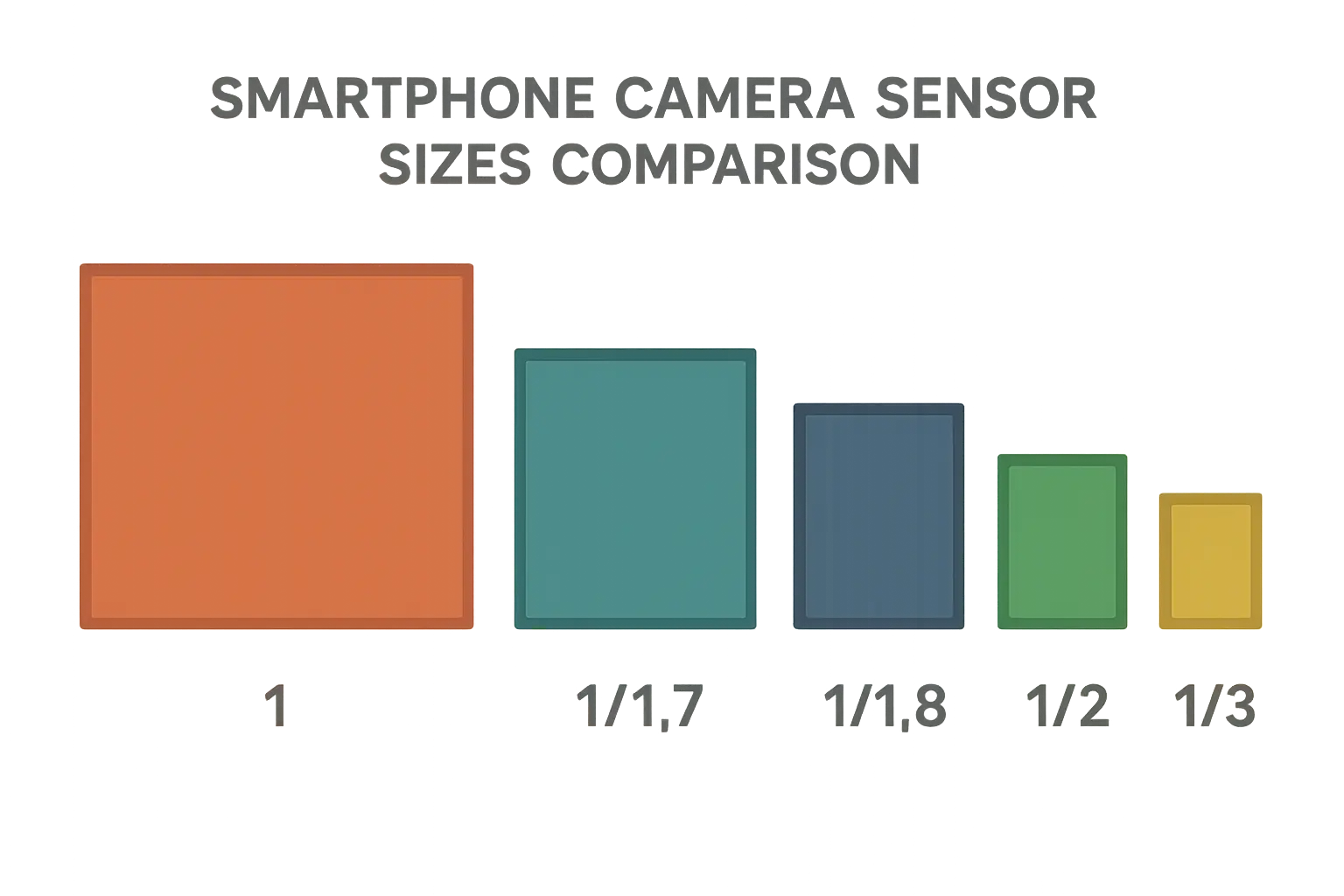
Performance Scenario |
Premium Flagships |
Standard Flagships |
Mid-Range |
Budget Options |
|---|---|---|---|---|
Daylight Photography |
Excellent |
Excellent |
Very Good |
Good |
Low-Light Performance |
Excellent |
Good |
Fair |
Limited |
Zoom Capabilities |
5x+ Optical |
2-3x Optical/Digital |
2x Digital |
Digital Only |
Video Stabilization |
Professional |
Very Good |
Good |
Basic |
Processing Speed |
Instant |
Fast |
Moderate |
Slower |
Smart Shopping: Matching Phone to Real Needs
Content creators: Invest in premium flagships. The advanced features and consistent performance justify the cost when it's your livelihood. Features like ProRAW, advanced video modes, and reliable low-light performance become essential tools.
Casual photographers: Mid-range phones like iPhone 13 or Pixel 8 hit the sweet spot. Great results without the premium price. These phones with triple camera systems deliver 90% of flagship performance at 60% of the cost.
Social media focused: Even budget options like Galaxy A54 5G work fine for Instagram and TikTok, especially in good lighting. The main camera quality has improved dramatically in budget phones.
Tech enthusiasts: Consider specialized options like Sony Xperia or OnePlus for unique features and manual controls that mainstream phones often lack.
Long-term Value Considerations
Software support varies wildly:
iPhones: 6-7 years of updates
Google Pixels: 7 years (newer models)
Samsung flagships: 4-5 years
Budget Android phones: 2-3 years if you're lucky
Resale value matters: iPhones hold value best, followed by Samsung flagships. Chinese brands depreciate quickly in Western markets, which affects the total cost of ownership.
Battery degradation affects camera performance: Older phones with weak batteries may disable intensive camera features to preserve power. Plan for battery replacement after 2-3 years of heavy use, especially on phones with advanced camera processing.
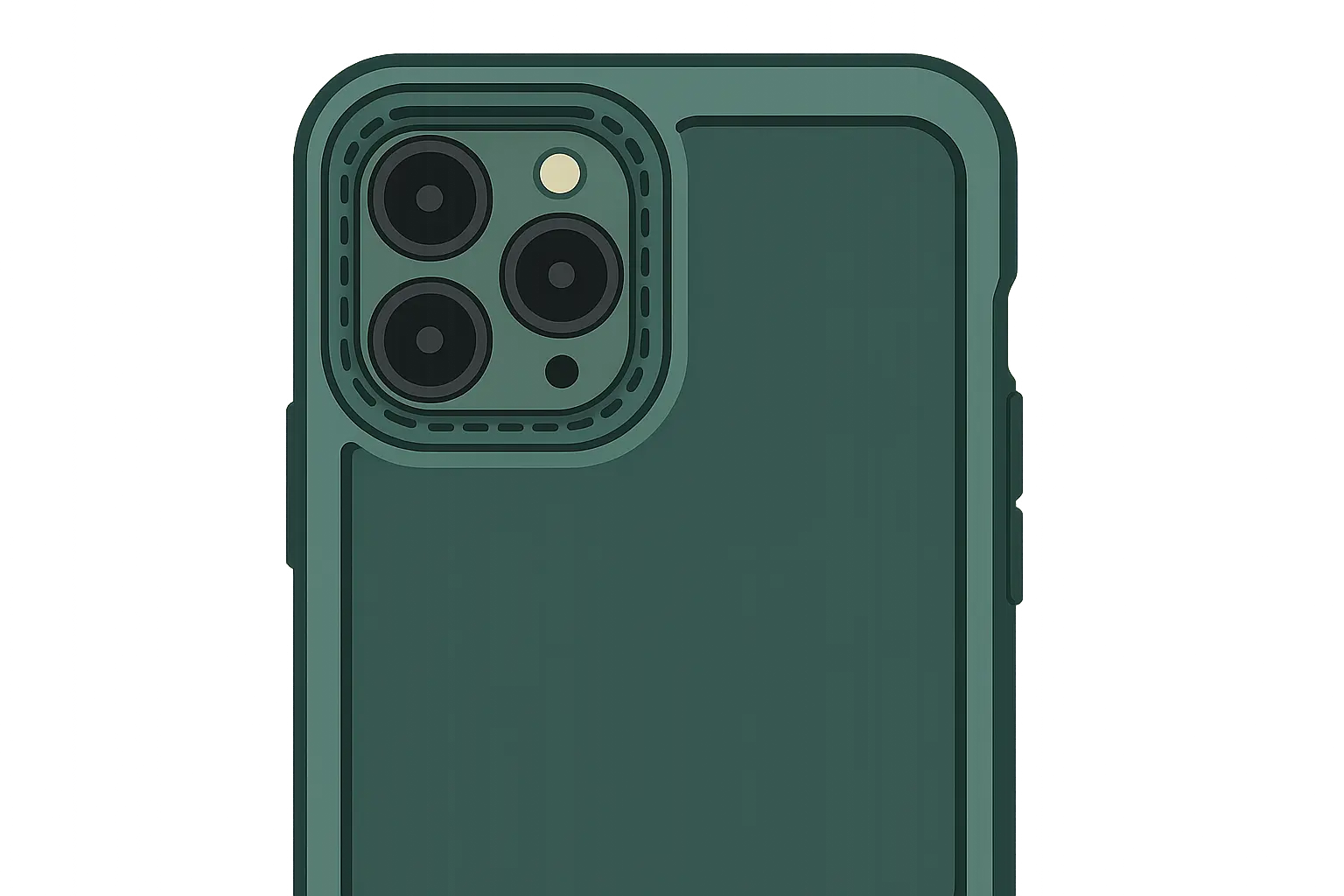
Protecting Your Triple Camera Investment
Here's something nobody talks about enough: these camera bumps are vulnerable. I've seen too many friends crack their camera lenses in drops that didn't even damage their screens.
When you invest in sophisticated phones with 3 cameras, protection becomes more than just preventing screen cracks. These advanced camera modules contain precision-aligned lenses, delicate optical image stabilization mechanisms, and sensitive autofocus systems that can be permanently damaged by impacts.
The Real Cost of Camera Damage
Here's what a camera repair actually costs:
iPhone 15 Pro Max camera replacement: $549
Galaxy S24 Ultra camera module: $420
Even mid-range phones: $200-300
A quality case costing $50-80 suddenly seems like the smartest money you'll spend. Those camera bumps stick out for a reason – they house incredibly sophisticated tech that doesn't bounce well.
Professional photographers protect $3,000 lenses with $200 filters. Protecting a $1,000 phone with a $60 case follows the same logic.
Why Rokform Protection Makes Sense
The protruding camera bump design found on most modern phones creates a vulnerable impact point. During drops, the camera module often makes first contact with the ground, potentially misaligning the carefully calibrated lenses or damaging the intricate stabilization systems.
Rokform addresses these specific vulnerabilities with military-grade protection engineered for modern smartphones. Their cases use high-quality polycarbonate construction that provides 6-foot drop protection while maintaining precise cutouts that don't interfere with camera functionality.
For photographers and content creators who use their phones during active pursuits, Rokform's mounting ecosystem provides secure attachment options for motorcycles, cars, bikes, and other activities. The RokLock™ twist lock system combined with MAGMAX™ magnets ensures your phone stays secure even during high-vibration activities.
The integration with MagSafe technology means you can use wireless charging and magnetic accessories without removing protection. This keeps your triple camera phone powered and ready for photography opportunities while maintaining full protection.
Ready to protect your triple camera investment? Explore Rokform's complete protection solutions and keep shooting with confidence.
Phone Category |
Average Camera Repair Cost |
Rokform Case Investment |
Protection ROI |
|---|---|---|---|
Premium Flagship ($1000+) |
$400-600 |
$50-80 |
5-12x return |
Standard Flagship ($600-1000) |
$250-400 |
$40-60 |
4-10x return |
Mid-Range ($400-600) |
$150-250 |
$35-50 |
3-7x return |
Budget ($200-400) |
$80-150 |
$30-40 |
2-5x return |
A content creator who dropped their unprotected Galaxy S24 Ultra from waist height onto concrete discovered that while the screen remained intact, the camera bump sustained damage that affected the telephoto lens's autofocus mechanism. The repair cost exceeded $400, highlighting why investing in quality protection is crucial for phones with advanced camera systems.

Making Your Final Decision
Stop overthinking the specs. Here's the simple truth:
If you're happy with your current phone's photos except for specific limitations (can't zoom enough, want wider shots, need better night photos), identify which triple camera phone solves those exact problems.
If you're completely unsatisfied with your current camera, any modern phone with triple camera setup will be a massive upgrade. Don't get paralyzed choosing between excellent options.
The phone that takes great photos is the one you'll actually use. A slightly worse camera that you love using beats a technically superior one that sits in a drawer.
Consider your upgrade timeline too. Planning to keep it for 4+ years? Invest in premium build quality and longer software support. Upgrading every 2 years? Mid-range options make more financial sense.
The Real Winner
The triple camera revolution democratized professional-looking photography. Whether you spend $300 or $1,300, you're getting capabilities that would have required thousands in professional gear just five years ago.
The best camera isn't necessarily the most expensive one – it's the one that matches how you actually take photos. Be honest about your needs, protect your investment properly, and enjoy finally having the versatility to capture exactly what you see.
Most importantly, remember that great photos come from understanding your tools and practicing with them. Even a budget triple camera phone can produce amazing results in the right hands. The computational photography advances mean that technique and composition often matter more than having the most expensive hardware.
As you make your decision, consider the total cost of ownership, including protection, software support longevity, and potential resale value. A well-protected phone that receives regular updates will serve you better and retain more value than an unprotected device that becomes obsolete quickly.
Your photography game is about to change, regardless of which option you choose. The smartphone camera revolution isn't slowing down – it's just getting more accessible.
